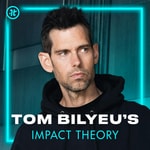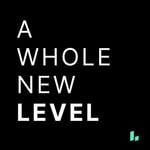Raising Health – Détails, épisodes et analyse
Détails du podcast
Informations techniques et générales issues du flux RSS du podcast.

Raising Health
Andreessen Horowitz, a16z Bio + Health
Fréquence : 1 épisode/10j. Total Éps: 184

Classements récents
Dernières positions dans les classements Apple Podcasts et Spotify.
Apple Podcasts
🇨🇦 Canada - lifeSciences
01/08/2025#26🇺🇸 États-Unis - lifeSciences
01/08/2025#16🇫🇷 France - lifeSciences
01/08/2025#87🇨🇦 Canada - lifeSciences
31/07/2025#17🇺🇸 États-Unis - lifeSciences
31/07/2025#16🇫🇷 France - lifeSciences
31/07/2025#72🇨🇦 Canada - lifeSciences
30/07/2025#11🇬🇧 Grande Bretagne - lifeSciences
30/07/2025#100🇺🇸 États-Unis - lifeSciences
30/07/2025#16🇫🇷 France - lifeSciences
30/07/2025#95
Spotify
Aucun classement récent disponible
Liens partagés entre épisodes et podcasts
Liens présents dans les descriptions d'épisodes et autres podcasts les utilisant également.
See all- https://www.caseymeans.com/goodenergy
52 partages
- https://arxiv.org/abs/1706.03762
44 partages
- https://youtu.be/s_LxZx42sIk
1 partage
- https://www.youtube.com/@a16z.
1 partage
Qualité et score du flux RSS
Évaluation technique de la qualité et de la structure du flux RSS.
See allScore global : 69%
Historique des publications
Répartition mensuelle des publications d'épisodes au fil des années.
Adapting Biopharma to AI: A 2024 Update with Greg Meyers
Épisode 34
mardi 27 août 2024 • Durée 25:55
Greg Meyers, EVP and Chief Digital and Technology Officer at Bristol Myers Squibb, or BMS, joins Jorge Conde, general partner at a16z.
This is a follow-up to their 2023 episode, where they discussed how biopharma can adapt to AI. Now, they revisit the conversation to see what’s changed and what hasn’t.
Together, they chat through tech as a competitive differentiator for large companies, generative AI for drug development, and what Greg and BMS look for in potential partners. They also highlight the importance of being agile and adaptable while navigating the changing landscape of biotech, providing valuable insights for founders.
Harnessing Water Dynamics for Drug Design with Michael Crackower and Jason Burch
Épisode 33
mardi 20 août 2024 • Durée 37:24
Michael Crackower, PhD, Chief Scientific Officer of Ventus Therapeutics, and Jason Burch, PhD, join Vineeta Agarwala, MD, PhD, general partner at a16z Bio + Health.
Together, they talk about how Ventus approaches drug discovery and why they believe we’re in the early stages of small molecule innovation. Specifically, we’ll hear about the ReSOLVE platform, which enables the drug hunting team to more accurately design and iterate on small molecular compounds for therapeutic applications. They also talk about the current candidates in the pipeline and how they’re able to go from idea to IND in record time.
The Science and Supply of GLP-1s with Chronis Manolis
Épisode 24
mardi 11 juin 2024 • Durée 31:30
Chronis Manolis, SVP and Chief Pharmacy Officer of UPMC Health Plan, joins Julie Yoo, general partner, Daisy Wolf, investment partner, and Will Shrank, venture partner, of a16z Bio + Health.
Together, they discuss how payors and providers are thinking about anti-obesity medications, as well as pricing and prior authorization considerations.
This is the third episode in our series on the science and supply of GLP-1s. Listen to last week’s episode to hear from Brooke Boyarsky Pratt, founder and CEO of knownwell, about the importance of patient-centric medical homes. The week before, we spoke with Carolyn Jasik, Chief Medical Officer at Omada Health, on GLP-1s from a clinical perspective.
World’s largest supercomputer v. biology’s toughest problems
Épisode 56
mardi 25 mai 2021 • Durée 33:15
This episode was recorded in March of 2019 to celebrate the 20th anniversary of Folding at Home, the distributed computing project for simulating protein dynamics, and originally aired on The a16z Podcast. Folding at Home is run on millions of devices, is the world’s largest supercomputer, and tackles some of biology’s toughest problems, including COVID-19.
Proteins are molecular machines that must first assemble themselves to function. But how does a protein, which is produced as a linear string of amino acids, assume the complex three-dimensional structure needed to carry out its job?
That's where Folding at Home comes in. Folding at Home is a sophisticated computer program that simulates the way atoms push and pull on each other, applied to the problem of protein dynamics, aka "folding". These simulations help researchers understand protein function and to design drugs and antibodies to target them.
Given the extreme complexity of these simulations, they require an astronomical amount of compute power. Folding at Hold solves this problem with a distributed computing framework: it breaks up the calculations in the smaller pieces that can be run on independent computers. Users of Folding at Home — millions of them today — donate the spare compute power on their PCs to help run these simulations. This aggregate compute power represents the largest super computer in the world: currently 2.4 exaFLOPS!
Folding at Home was launched in the lab of Vijay Pande at Stanford. In this episode, Vijay (now a general partner at a16z) is joined by his former student and current director of Folding at Home, Greg Bowman, an associate professor at Washington University in St. Louis, and host Lauren Richardson. The conversation covers the origins of the Folding at Home project and the scientific and technical advances needed to solve the complex protein folding and distributed computing problems.
To find out more about how Folding at Home is contributing to the COVID-19 pandemic, check out the recenty published article from the Bowman lab, "SARS-CoV-2 simulations go exascale to predict dramatic spike opening and cryptic pockets across the proteome", published in Nature Chemistry.
The Trials of Clinical Trials
Épisode 55
mardi 18 mai 2021 • Durée 24:48
On the path from scientific discovery to new drug, the clinical trial is a huge — and critical — hurdle. Clinical trials are themselves experiments, and to make sure that they are doing the best possible job at determining the safety and efficacy of the new drug, we need to be able to do experiments on those experiments. But how do you do that in such a highly regulated space?
Host Lauren Richardson talks to James Zou, Assistant Professor of Biomedical Data Science at Stanford University, and a16z general partner Vineeta Agarwala, physician and expert on real world data in healthcare, about new research from the Zou lab that uses AI-powered simulations of clinical trials and real world patient data to understand how different designs influence trial outcomes. In particular, looking for designs that can make trials more inclusive, which is key for getting patients access to potentially life-saving care and for running trials efficiently. The conversation covers the inherited rules and assumptions governing which patients can participate in trials, how Dr. Zou, lead author Ruishan Liu, and colleagues combined real world data and computer simulations to challenge these assumptions via a data-driven approach, and how this can inform smarter trial design.
The article at the center of today's episode is: "Evaluating eligibility criteria of oncology trials using real-world data and AI" by Ruishan Liu, Shemra Rizzo, Samuel Whipple, Navdeep Pal, Arturo Lopez Pineda, Michael Lu, Brandon Arnieri, Ying Lu, William Capra, Ryan Copping & James Zou, published in Nature.
The New Science of Cell Shape
Épisode 54
mardi 11 mai 2021 • Durée 32:11
They say you should never judge a book by its cover, but can you judge a cell by its shape? On this episode, host Lauren Richardson is joined by Maddison Masaeli (CEO and cofounder of Deepcell), and a16z general partner Vijay Pande (whose lab at Stanford focused on the development of novel computational methods for simulating biology), to discuss what we can learn by characterizing a cell's shape — also known as its morphology. We've long appreciated that morphology can be used to discriminate cells, for example, cancer cells look very different than the surrounding tissue and can be spotted in a biopsy, and the various classes of immune cells all have distinct appearances. But characterization of cell shape — and what it can tell us about the underlying biology of those cells and the health of the organism that they came from — has been stuck in the low-tech, manual, qualitative era. To unlock the potential of cell morphology, Maddison and her colleagues are leveraging the power of artificial intelligence to assess and learn from cell images to create a quantitative, scaleable technology. The conversation covers the untapped potential of studying cells and their shape, how Maddison and her team at Deepcell are building an AI with seemingly limitless applications, and where this technology could take us.
Journal Club: Sleeping Under the Star-Shaped Cells
Épisode 53
mardi 4 mai 2021 • Durée 25:50
Neuroscientists have long been trying to determine what happens in the brain during sleep, but to date, they have overlooked a key player: astrocytes. These star-shaped cells were once thought to be the glue that held the brain together, but we are now beginning to appreciate their importance in a variety of brain functions. In this episode, host Lauren Richardson talks to Kira Poskanzer, Assistant Professor at the University of California, San Francisco, about her group's work showing that neurons are only one piece of the larger sleep puzzle. The conversation covers the complexity of sleep, how astrocytes control two key attributes of sleep (depth and duration), the technology and methods employed to uncover this novel mode of regulation, and how appreciating the role of astrocytes in governing sleep could lead to new insights into neuropsychiatric conditions and how to treat them.
The article at the center of today's episode is: “Cortical astrocytes independently regulate sleep depth and duration via separate GPCR pathways” by Trisha V Vaidyanathan, Max Collard, Sae Yokoyama, Michael E Reitman, and Kira E Poskanzer, published in eLife.
The Power of Patient-Centric Healthcare
Épisode 52
mardi 27 avril 2021 • Durée 35:47
Today we are re-running an episode exploring a question that seems super straightforward, but that on closer examination reveals incredible complexity, and that is "how do we put the patient at the center of the healthcare system?” It almost seems counterintuitive, since aren’t patients always the center of healthcare? But healthcare is a strange industry, in that it is built with the fundamental goal of serving patients, but in many ways, the patient isn’t always the end customer of the system. In fact, the patient — and the patient’s voice — can often be lost or overlooked in the enormous, complex, convoluted business flows between a huge system of providers, in elaborate clinical work flows, in insurance coverage and reimbursements, and in high level policy debates.
In this episode, a16z general partner Julie Yoo and deal team partner Jay Rughani talk with Freda Lewis Hall — a physician who was formerly Pfizer’s Chief Patient Officer and Chief Medical Officer; and who among many other roles was appointed by the Obama Administration to the Board of the Patient-Centered Outcomes Research Institute. They discuss what happens when you rethink the entire healthcare system from the patient’s point of view, from drug development to clinical trials to care delivery. What tools and new approaches can we use to truly put the patient at the center of the healthcare system? And how do we update our Flintstones healthcare system to match our Star Wars medicines?
Journal Club: Hunting the Eagle Killer
Épisode 51
mardi 20 avril 2021 • Durée 27:34
In 1994, 29 bald eagles were found dead at DeGray Lake in Arkansas. This mass mortality event kicked off a search for the culprit which has last over 25 years. On this episode of the Bio Eats World Journal Club, host Lauren Richardson talks to Susan B. Wilde of the University of Georgia about her group's work finally identifying the eagle killer, and revealing a complex web of ecosystem dysfunction. Solving this mystery required a fresh point of view, a wide range of techniques and technologies, and an international collaborative effort.
Susan B. Wilde, Ph.D, Associate Professor of Aquatic Science at the University of Georgia, joins host Lauren Richardson to discuss the results and implications of the article "Hunting the eagle killer: A cyanobacterial neurotoxin causes vacuolar myelinopathy" by Steffen Breinlinger, Tabitha J. Phillips, Brigette N. Haram, Jan Mareš, José A. Martínez Yerena, Pavel Hrouzek, Roman Sobotka, W. Matthew Henderson, Peter Schmieder, Susan M. Williams, James D. Lauderdale, H. Dayton Wilde, Wesley Gerrin, Andreja Kust, John W. Washington, Christoph Wagner, Benedikt Geier, Manuel Liebeke, Heike Enke, Timo H. J. Niedermeyer and Susan B. Wilde, published in Science.
Journal Club: Sourcing the Secrets of Climate Adaptation
Épisode 50
mardi 13 avril 2021 • Durée 22:52
Understanding how plants have adapted to natural climate change over millions of years provides a playbook of evolutionary strategies to help us prepare for and respond to man-made climate change. On this episode, host Lauren Richardson talks to Thomas Juenger, Associate Professor at the University of Texas in Austin and co-senior author of the recent article “Genomic mechanisms of climate adaptation in polyploid bioenergy switchgrass”, published in Nature. They discuss how studying native plants — like switchgrass — can inform crop improvement strategies, the import role of switchgrass as a possible future source of biofuels, how advances in sequencing technology have unlocked the secrets hidden in plant genomes, and more.
Thomas Juenger, Ph.D, Associate Professor of Integrative Biology at the University of Texas at Austin, joins host Lauren Richardson (@lr_bio) to discuss the results and implications of the article “Genomic mechanisms of climate adaptation in polyploid bioenergy switchgrass”, by John T. Lovell, Alice H. MacQueen, Sujan Mamidi, Jason Bonnette, Jerry Jenkins, Joseph D. Napier, Avinash Sreedasyam, Adam Healey, Adam Session, Shengqiang Shu, Kerrie Barry, Stacy Bonos, LoriBeth Boston, Christopher Daum, Shweta Deshpande, Aren Ewing, Paul P. Grabowski, Taslima Haque, Melanie Harrison, Jiming Jiang, Dave Kudrna, Anna Lipzen, Thomas H. Pendergast IV, Chris Plott, Peng Qi, Christopher A. Saski1, Eugene V. Shakirov, David Sims, Manoj Sharma, Rita Sharma, Ada Stewart, Vasanth R. Singan, Yuhong Tang, Sandra Thibivillier, Jenell Webber, Xiaoyu Weng, Melissa Williams, Guohong Albert Wu, Yuko Yoshinaga, Matthew Zane, Li Zhang, Jiyi Zhang, Kathrine D. Behrman, Arvid R. Boe, Philip A. Fay, Felix B. Fritschi, Julie D. Jastrow, John Lloyd-Reilley, Juan Manuel Martínez-Reyna, Roser Matamala, Robert B. Mitchell, Francis M. Rouquette Jr, Pamela Ronald, Malay Saha, Christian M. Tobias, Michael Udvardi, Rod A. Wing, Yanqi Wu, Laura E. Bartley, Michael Casler, Katrien M. Devos, David B. Lowry, Daniel S. Rokhsar, Jane Grimwood, Thomas E. Juenger & Jeremy Schmutz published in Nature.









